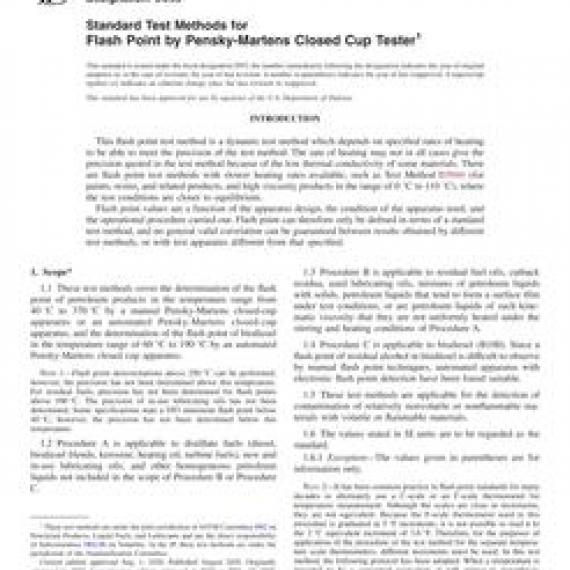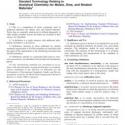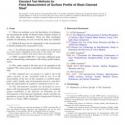No products
ASTM D93-20
ASTM D93-20 Standard Test Methods for Flash Point by Pensky-Martens Closed Cup Tester
standard by ASTM International, 08/01/2020
Full Description
1.1These test methods cover the determination of the flash point of petroleum products in the temperature range from 40C to 370C by a manual Pensky-Martens closed-cup apparatus or an automated Pensky-Martens closed-cup apparatus, and the determination of the flash point of biodiesel in the temperature range of 60C to 190C by an automated Pensky-Martens closed cup apparatus.
Note 1:Flash point determinations above 250C can be performed, however, the precision has not been determined above this temperature. For residual fuels, precision has not been determined for flash points above 100C. The precision of in-use lubricating oils has not been determined. Some specifications state a D93 minimum flash point below 40C, however, the precision has not been determined below this temperature.
1.2Procedure A is applicable to distillate fuels (diesel, biodiesel blends, kerosine, heating oil, turbine fuels), new and in-use lubricating oils, and other homogeneous petroleum liquids not included in the scope of Procedure B or Procedure C.
1.3Procedure B is applicable to residual fuel oils, cutback residua, used lubricating oils, mixtures of petroleum liquids with solids, petroleum liquids that tend to form a surface film under test conditions, or are petroleum liquids of such kinematic viscosity that they are not uniformly heated under the stirring and heating conditions of Procedure A.
1.4Procedure C is applicable to biodiesel (B100). Since a flash point of residual alcohol in biodiesel is difficult to observe by manual flash point techniques, automated apparatus with electronic flash point detection have been found suitable.
1.5These test methods are applicable for the detection of contamination of relatively nonvolatile or nonflammable materials with volatile or flammable materials.
1.6The values stated in SI units are to be regarded as the standard.
1.6.1Exception-The values given in parentheses are for information only.
Note 2:It has been common practice in flash point standards for many decades to alternately use a C-scale or an F-scale thermometer for temperature measurement. Although the scales are close in increments, they are not equivalent. Because the F-scale thermometer used in this procedure is graduated in 5F increments, it is not possible to read it to the 2C equivalent increment of 3.6F. Therefore, for the purposes of application of the procedure of the test method for the separate temperature scale thermometers, different increments must be used. In this test method, the following protocol has been adopted: When a temperature is intended to be a converted equivalent, it will appear in parentheses following the SI unit, for example 370C (698F). When a temperature is intended to be a rationalized unit for the alternate scale, it will appear after or, for example, 2C or 5F.
1.7This standard does not purport to address all of the safety concerns, if any, associated with its use. It is the responsibility of the user of this standard to establish appropriate safety, health, and environmental practices and determine the applicability of regulatory limitations prior to use. For specific warning statements, see 6.4, 7.1, 9.3, 9.4, 11.1.2, 11.1.4, 11.1.8, 11.2.2, and 12.1.2.
1.8This international standard was developed in accordance with internationally recognized principles on standardization established in the Decision on Principles for the Development of International Standards, Guides and Recommendations issued by the World Trade Organization Technical Barriers to Trade (TBT) Committee.


































